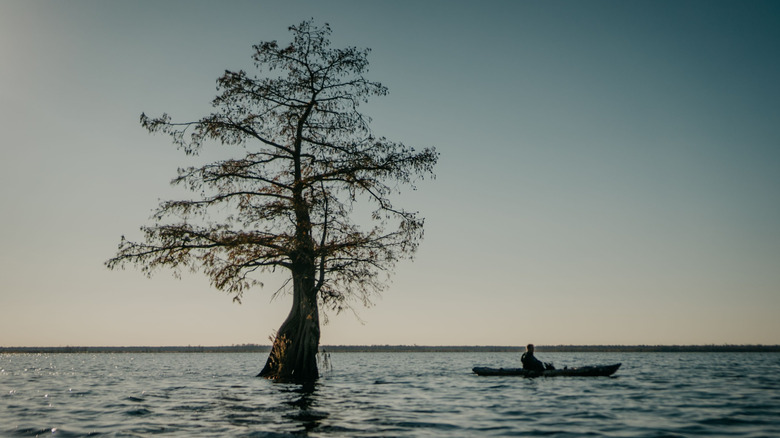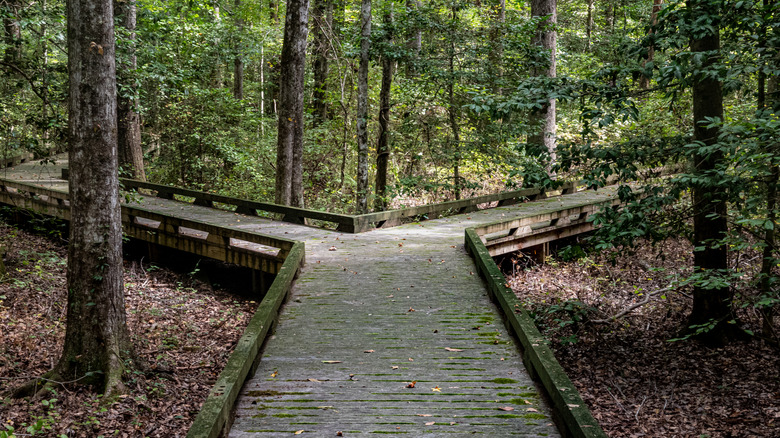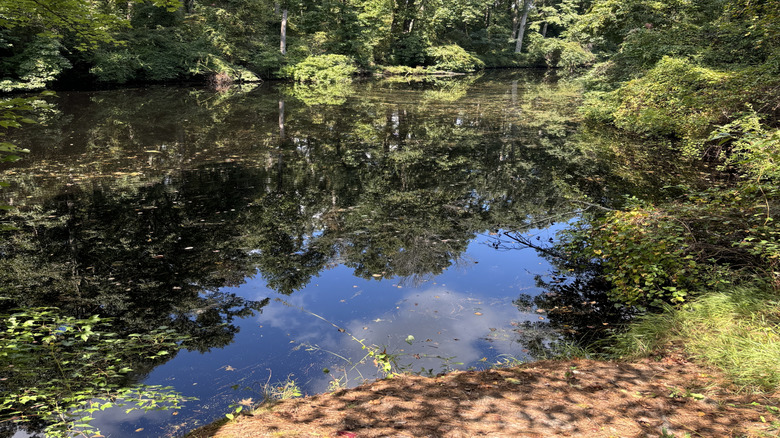North Carolina's Swampy State Park Blends Gorgeous Leisurely Paddles With Adventurous Scenic Hikes
In the marshy Coastal Plain of Northeast North Carolina and sprawling into Southeast Virginia, there's a massive tract of swampy land spanning almost 113,000 acres. Swathed in fog, spackled in Spanish moss-covered bald cypress and tupelo, snarled in thickets of honeysuckle and woodbine, and portraying all the quintessential, murky aesthetic of an eerie cartoon, it's one of the most important wildlife habitats in the American Mid-Atlantic. Called the Great Dismal Swamp, it's anything but dreary as it sustains more than 300 species of diverse flora and fauna while boasting world-class birding, hiking and biking trails, paddling, boating, and cultural lore. It's not the largest swamp in the U.S. (that distinction goes to the Atchafalaya Basin in southern Louisiana, another paradise for wildlife lovers), but the Great Dismal Swamp National Wildlife Refuge, a 167-square-mile preserve within the 750-square-mile swamp revitalized through conservation efforts, is a naturalist's dream.
Once spanning more than a million acres of what early colonizers considered wasteland, settlers surveyed the area in the mid-18th century and started to drain and cultivate the swamp. George Washington oversaw the digging of a canal and founded a lumber business logging native cypress and white cedar. The swamp also became a haven for moonshiners, poachers, and freedom seekers escaping slavery. In fact, the Great Dismal Swamp was a major part of the Underground Railroad and housed communities of maroons — self-emancipated slaves who settled off-grid — for generations.
By the 1900s, the swamp was being aggressively logged and drained for agricultural and commercial use, and conservationists raised alarm at the erosion of natural ecosystems. In the 1970s, the Union Camp Corporation donated a kick-start of nearly 50,000 acres to the Nature Conservancy, which was officially signed into protection by the U.S. Department of the Interior in 1974.
The Dismal Swamp State Park in Camden County is an outdoorsy Paradise
The Great Dismal Swamp is anything but dreary for outdoorsy folks, and the Dismal Swamp State Park in Camden County on the North Carolina side is a great jumping-off point to explore it. Located in South Mills, south of the Virginia state line, the free-to-enter park is pet-friendly and offers more than 20 miles of trails. It has one of the largest populations of black bears on the East Coast, and, as part of the famed NC Birding Trail, it should be on your list of best birdwatching spots in the U.S. More than 200 species have been spotted throughout the swamp, including woodpeckers, wood ducks, bald eagles, egrets, and one of the least observed North American birds, the Swainson's Warbler.
Paddling is a revered activity at the Great Dismal. The park holds an annual "Paddle for the Border" event where participants wind leisurely through the canal across the state border to Chesapeake, Virginia, enjoying the swamp life all around. But you don't need to limit yourself to the annual springtime event; canoe and kayak rentals are available year-round on the canal.
While the marshy swampland isn't mountainous, the region's rugged environment provides great off-roading adventures for two-wheel enthusiasts. There are bike trails in the state park, or you can access more challenging terrain for mountain biking from Washington Ditch Road near Lake Drummond. There's no camping in the state park, so most visitors traditionally stay at the nearby Merchants Millpond State Park. Unfortunately, it's closed to tent and RV campers indefinitely for renovation as of this writing, but adventure-seekers can still access some camping via backpack or paddling through the Feeder Ditch.
You can access the Great Dismal Swamp through North Carolina and Virginia
Another popular way to experience the Great Dismal Swamp is via the Lake Drummond Wildlife Drive through Suffolk, Virginia. This 6-mile gravel road through the park is an incredible introduction to the swamp and gives visitors access to the lake for boating and fishing as well as walking and biking trails and a chance to spot wildlife, from black bears to birds. To get to the Railroad Ditch trailhead, use the address 3120 Desert Rd., Suffolk, Virginia; note that you'll need to pay for a small automobile pass to enter with a vehicle. Additional entrances to the Great Dismal Swamp on the Virginia side include the Portsmouth Ditch Entrance, the Jericho Lane Entrance, and the Washington Ditch Entrance. If you have your own boat, you can access Lake Drummond via a three-mile Feeder Ditch or at Sawyer's Creek off Route 343, but bear in mind that Lake Drummond has some restrictions on boat engine size.
The closest airport is Norfolk International Airport in Norfolk, Virginia, just 40 minutes north of the Dismal Swamp Canal area in North Carolina and about an hour's drive north of Virginia's Railroad Ditch trailhead. You can also fly into Raleigh-Durham, the closest large airport on the North Carolina side, or Greenville, which is slightly closer but smaller. From the Raleigh area, it's about a 2.5- to 3-hour drive northeast across the state to either the Dismal Swamp Canal or the Railroad Ditch trailhead in Virginia. From Greenville, NC, it's just under two hours to the canal. From Kitty Hawk, North Carolina's artsy, waterfront gateway to the Outer Banks, it's about 1.5 hours.


